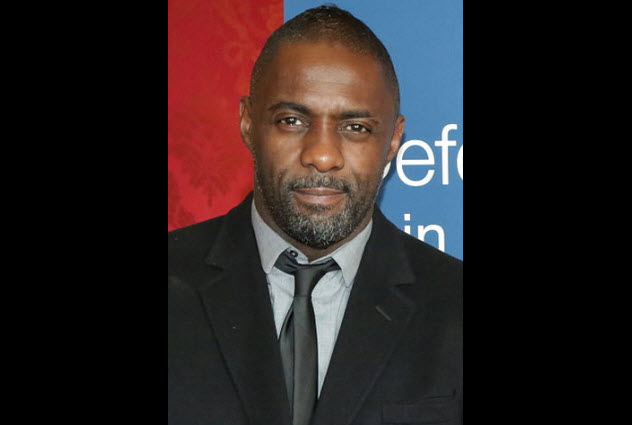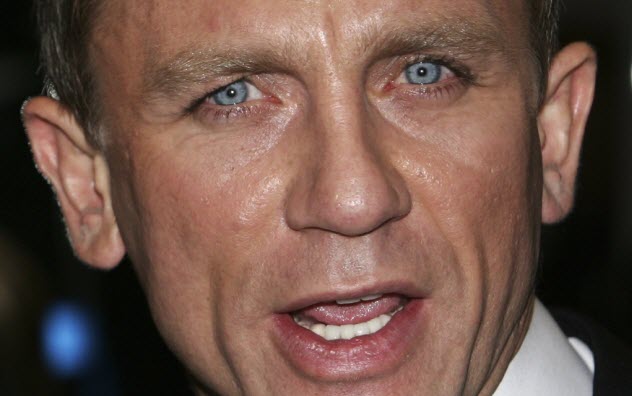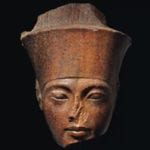 History
History  History
History  Animals
Animals Ten Times It Rained Animals (Yes, Animals)
 Mysteries
Mysteries 10 Devastating Missing Child Cases That Remain Unsolved
 Creepy
Creepy 10 Scary Tales from the Middle Ages That’ll Keep You up at Night
 Humans
Humans 10 One-of-a-kind People the World Said Goodbye to in July 2024
 Movies and TV
Movies and TV 10 Holiday Movies Released at Odd Times of the Year
 Politics
Politics 10 Countries Where Religion and Politics Are Inseparable
 Weird Stuff
Weird Stuff 10 Freaky Times When Famous Body Parts Were Stolen
 Miscellaneous
Miscellaneous 10 Interesting Things Manufacturers Stopped Making and Why
 Gaming
Gaming 10 Funny Tutorials in Games
 History
History 10 Desperate Last Stands That Ended in Victory
 Animals
Animals Ten Times It Rained Animals (Yes, Animals)
 Mysteries
Mysteries 10 Devastating Missing Child Cases That Remain Unsolved
Who's Behind Listverse?

Jamie Frater
Head Editor
Jamie founded Listverse due to an insatiable desire to share fascinating, obscure, and bizarre facts. He has been a guest speaker on numerous national radio and television stations and is a five time published author.
More About Us Creepy
Creepy 10 Scary Tales from the Middle Ages That’ll Keep You up at Night
 Humans
Humans 10 One-of-a-kind People the World Said Goodbye to in July 2024
 Movies and TV
Movies and TV 10 Holiday Movies Released at Odd Times of the Year
 Politics
Politics 10 Countries Where Religion and Politics Are Inseparable
 Weird Stuff
Weird Stuff 10 Freaky Times When Famous Body Parts Were Stolen
 Miscellaneous
Miscellaneous 10 Interesting Things Manufacturers Stopped Making and Why
 Gaming
Gaming 10 Funny Tutorials in Games
10 Most Controversial James Bond Facts
James Bond is a worldwide phenomenon—an icon to young and old, male and female. It seems that the character and his antics never go out of style. However, over the years, James Bond and the actors who play him have made as many waves outside of the movies as inside of them.
10 Roger Moore And The Race Debate

Roger Moore charmed countless fans as the third actor to officially play James Bond, transitioning from Sean Connery’s 1960s spy adventures into a swinging ’70s miasma of Bond weirdness, including the polarizing film Moonraker. Much more recently, though, Moore polarized fans again when he opined that Idris Elba should not play the superspy.
As Elba’s popularity has grown, many fans have speculated how bold and different it would be if he replaced Daniel Craig as the next James Bond, marking the first time the spy would be played by a black actor. In an interview with Paris Match, Moore allegedly responded to this suggestion by saying that Bond should be portrayed as someone “English-English.”
Of course, Elba is English, so many interpreted the odd phrase “English-English” to be a dog whistle for Moore claiming that Bond should only be played by a white man. While some fans defended Moore and his statement as being about nationality and not race, the interview also has him placing this “English-English” preference over the Scottish, Welsh, and Irish actors who have portrayed Bond.
Therefore, the interview has Moore insulting either all black actors or nearly all Bond actors, including the iconic Sean Connery. Of course, whether either implication is as offensive as the mere existence of Moonraker is a matter of taste.
9 Daniel Craig And The Bad Role Model

Generations of fans have looked up to the character of James Bond. He is a model of male sophistication in manners, style, and romance with each comely woman sharing his latest adventure. However, there is one solid authority on why James Bond is a terrible person: Bond actor Daniel Craig.
In a candid interview with The Hollywood Reporter, Craig used his famous “mince no words” personality to point out that people view Bond as a lady-killer and somehow overlook that he is a terrible misogynist. Craig also points out that the appearance of chivalry on Bond’s part is often more a result of the writers surrounding the single-minded agent with women who can put him in his place.
When the interviewer lobbed a softball question at Craig by asking what people can learn from the character of Bond, the actor remained equally candid and said, “Nothing.” Then he pointed out that these movies are about a simple, direct killer and are not the “life-changing experience” of male fantasy that some fans make them out to be.
8 Is James Bond Bisexual?
The James Bond film Skyfall was a refreshing return to form for the series, featuring amazing action and an absolutely captivating villain, Javier Bardem’s Silva. However, the most memorable scene for many people was Silva’s interrogation of Bond. Silva taunts the hero by implying that he may have sex with Bond and that this is the first time Bond has been the subject of male affection. Bond’s potentially monocle-popping reply: “What makes you think this is my first time?”
Depending on how viewers read this scene, there are some interesting implications. One is that veteran lady-killer James Bond may be bisexual. Interestingly enough, the cast and writer did not make the issue clearer when pressed on the matter. Screenwriter John Logan responded that the main point was to have Silva make Bond feel uncomfortable in a new way by making explicit the usually implicit homoerotic undertones of villain/hero exchanges.
Bond star Daniel Craig demurred when asked, simply saying that he does not think of the world “in sexual divisions.” Bardem commented that viewers intrigued about the possible homosexuality of the villain “could read it that way” and that he felt the director wanted the question of whether Silva was joking left unanswered. However, with no outright denials of Bond bisexuality holding them back, fan fiction writers found themselves both shaken and stirred by the new possibilities.
7 A Tale Of Two Bonds
In the 1980s, Sean Connery returned to the role of James Bond in the film Never Say Never Again. However, this movie is never included in Bond film compilations or broadcast in Bond movie marathons because it’s not actually a Bond film. At least not officially.
The plot goes back to the James Bond novel Thunderball. Author Ian Fleming collaborated on the film version of Thunderball with producer Kevin McClory. The original movie never happened, so Fleming transformed the plot into one of his James Bond novels. However, the author failed to credit McClory for the plot, resulting in a lawsuit.
McClory won two big prizes from his successful lawsuit. First, he received production credit for the eventual Thunderball movie starring Sean Connery. Second, McClory received the right to create his own film version of Thunderball after at least 10 years had passed.
McClory executed this right, even luring Connery back to create an intriguing new Bond entry that lies outside the official James Bond canon. The film also gave us a more down-to-earth counterpart to the increasingly flamboyant Roger Moore and his official Bond films.
6 The Bond Girl Who Was A Boy
A key component of a James Bond film is that women find him irresistible, with a kind of cultural cachet forming around the starlet who becomes the latest “Bond Girl.” However, in 1981, a Bond girl was revealed to have once been a boy, both shaking and stirring international controversy.
In For Your Eyes Only starring Roger Moore, model and actress Caroline “Tula” Cossey played one of the extras in a pool scene. Born Barry Kenneth Cossey, she had enjoyed great success after transitioning to a female. She was a commercial actress and glamorous model, with credits from Vogue to Playboy. It seemed like appearing in a legendary James Bond movie would be the stepping-stone to an even larger media career.
Unfortunately, the high-profile movie also brought high-profile controversy. The UK tabloid News of the World sought to destroy her with an article entitled “James Bond’s Girl Was a Boy.” This revelation shocked both her personal fans and Bond fans, with the public backlash causing her to consider suicide. Fortunately, she did not take her life and was able to return to modeling, but the huge controversy prevented her from having a larger film career.
5 Daniel Craig Would Rather Die
For many male actors and perhaps almost all men, the idea of playing James Bond seems like a dream come true. The films can launch their stars to international fame while making these actors filthy rich. However, Daniel Craig shocked the world when he revealed that those opportunities weren’t enough for him to play Bond again.
When asked if he would return for another Bond movie after SPECTRE, Craig told Time Out magazine that he would rather slash his wrists than return. “All I want to do is move on,” he said.
Craig was even less talkative about who should be the next James Bond when he said, “Look, I don’t give a f—k.” Topping off the bluntness in his interview, Craig revealed that he would only return for the money rather than any energy or passion he has for the role.
4 James Bond Jr.?
James Bond has been a multimedia franchise for decades. Simple books about a spy became big-budget films, which in turn begot more novels, video games, comics, and so on. However, there’s one form of James Bond media that his fans mostly attempted to forget—the 1991 James Bond Jr. cartoon.
Despite the title, the 65 episodes of this cartoon did not feature the son of James Bond but instead focused on the insane high school adventures of his nephew. Even if we ignore the fact that Bond is an orphan and probably wouldn’t have a nephew, there are many reasons why the cartoon series is the most controversial Bond of all.
The cartoon borrowed and twisted adult elements of the Bond films. For example, Bond Jr. teamed up with I.Q., the grandson of Q, and flirted with Goldie Finger, the daughter of Goldfinger. Bond Jr. also fought actual Bond villains, such as Oddjob and Dr. No.
In the strangest twist of all, Dr. No—a normal-looking male human in the movie sharing his name—instead looks like a green alien with pointed ears and a Fu Manchu mustache in the cartoon. There is no shortage of reasons why Bond fans label this cartoon as “For No Eyes Only.”
3 From Cold War To Capitalist Icon

Nowadays, most people view James Bond as a globetrotting British hero—nothing more, nothing less. However, Bond was created as Cold War propaganda. Specifically, Ian Fleming’s original novels portrayed a British superman adept at destroying communists wherever he encountered them.
Interestingly, these Cold War connotations were toned down as soon as Bond landed on the silver screen. Although the literary Bond struggled against the Soviet intelligence agency SMERSH, the films replaced that with the international cabal known as SPECTRE.
According to early Bond critics, the films’ emphasis on nifty gadgets in place of low-tech spywork played its own role in Cold War culture. John le Carre—a writer and former spy—dubbed the reliance on these gadgets as a tawdry way to impart “a kind of magic” on our otherwise “drab and materialistic” lives.
Of course, by flaunting the ability of the economically booming West to deploy such technology against its enemies, even the cinematic James Bond served to smash debt-ridden communist countries in the eyes of the public, although with ejector seats in his Aston Martins instead of his fists.
2 Bond Swaps The Martini For A Heineken
The famous phrase “shaken, not stirred” cemented James Bond as a drinker—specifically as a consumer of meticulously made martinis. That’s why many Bond fans felt shocked and betrayed when Bond swapped his favorite martini for a Heineken beer.
Heineken has actually sponsored a number of Bond films over the years, including most of Pierce Brosnan’s Bond films and all of Daniel Craig’s. However, Skyfall marked the first time that Bond consumed the brand on-screen. In addition, Craig began starring in Heineken ads as James Bond.
Some people felt that this was a bridge too far for product placement, adjusting the plot of the movie to support a sponsor rather than the typical method of allowing the sponsor’s product to sit quietly in the background of a scene. The motivation for having Bond consume the beer on-screen is clear: Heineken wants viewers to think they are the best because James Bond will settle for nothing less.
Not everyone saw it that way. By making James Bond a less formal character, some people believe that this product placement was a cheap attempt to appease a casual audience into thinking that their consumerism brings them closer to the superspy—all at the expense of 50 years of cinematic, martini-filled history.
1 The Most Popular Psychopath?
Perhaps the most controversial aspect of James Bond is the world’s never-ending fascination with a cold-blooded murderer. Matt Damon, who famously portrayed the spy Jason Bourne, described Bond as “an imperialist, misogynist sociopath who goes around bedding women and swilling martinis and killing people. He’s repulsive.”
Of course, it’s easy to write off Bond’s excesses as part of the medium he inhabits. After all, is he really that much worse than your average action hero?
As always, it depends on how you define things, but Bond ticks off several items on the literal psychopath checklist devised by Dr. Robert Hare of the University of British Columbia. These traits include a “cunning and manipulative nature, pathological dishonesty, lack of remorse, [and] promiscuous sexual behavior.”
According to a study published in New Science in 2008, Bond exemplifies a psychopath because “he’s clearly disagreeable, extrovert and likes trying new things—including killing people.”
Of course, Bond is not your run-of-the-mill psycho. He’s more of a socialized psychopath, someone who is actually malevolent but appears mostly normal to friends and colleagues.
Arguably, this subtext came to the surface in the Skyfall movie, which portrayed Javier Bardem’s villainous Silva as a kind of evil Bond twin. Silva was the unsocialized psychopath but one who still had the presence of mind to criticize Bond for his “pathological rejection of authority based on unresolved childhood issues,” another possible symptom for a psychopathic diagnosis.
Ultimately, Bond’s mental state is less fascinating than this simple fact: He is the most celebrated serial killer–hero in books and film. By using charm, women, and one-liners, Bond disguises the fact that he would be the hated villain in any movies but his own.
@PocketEpiphany is still chasing the dragon of playing GoldenEye with his high school buddies.








